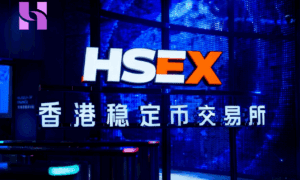In today’s competitive industrial landscape, maintenance managers face constant pressure to balance equipment reliability with budget constraints. When critical automation components fail, the choice between expensive new replacements and cost-effective alternatives can significantly impact operational budgets. GE PACSystemsRXi refurbished parts offer a compelling middle ground that addresses both financial and operational concerns.
The GE PACSystems RXi platform has been a workhorse in manufacturing facilities, power generation plants, and process industries for years. As these systems age, finding replacement parts becomes increasingly challenging and expensive. Refurbished components provide an intelligent solution that extends equipment life without the premium cost of new parts. These professionally restored components undergo rigorous testing and quality assurance processes to ensure they meet original specifications. For maintenance teams managing tight budgets while maintaining uptime requirements, refurbished parts represent a strategic approach to asset management that delivers both immediate cost savings and long-term reliability. Understanding how to leverage these solutions effectively can transform maintenance operations from a cost center into a value-generating function.
Understanding GE PACSystemsRXi refurbished parts
GE PACSystemsRXi refurbished parts are original equipment components that have been professionally restored to meet or exceed factory specifications. These parts typically come from decommissioned systems, equipment upgrades, or units that were removed during facility modernizations. Unlike used parts sold “as-is,” refurbished components undergo comprehensive restoration processes that include cleaning, component replacement, firmware updates, and extensive functional testing.
The refurbishment process transforms aging hardware into reliable alternatives to new equipment. Specialized technicians disassemble each unit, inspect circuit boards for wear or damage, replace capacitors and other components prone to degradation, and verify all connections meet original tolerances. After reassembly, parts undergo burn-in testing that simulates operational conditions to identify potential failures before deployment.
For industries relying on GE PACSystems RXi controllers, I/O modules, power supplies, and communication interfaces, refurbished parts solve a critical challenge. As GE transitions focus to newer platforms, original parts become scarcer and more expensive. Refurbished components bridge this gap, providing maintenance teams with access to quality replacements without extended lead times or inflated costs. These parts maintain compatibility with existing systems, eliminating concerns about integration issues or programming modifications. For facilities operating legacy automation infrastructure, refurbished parts represent a practical pathway to sustained operations while planning longer-term modernization strategies.
The Benefits of Refurbished Parts
Choosing refurbished GE PACSystemsRXi parts over new components delivers tangible advantages that extend beyond simple cost reduction. These benefits address multiple organizational priorities simultaneously, making refurbished parts an increasingly strategic choice for maintenance operations.
The financial advantage remains the most immediate benefit. Refurbished parts typically cost 40-70% less than new equivalents, allowing maintenance budgets to stretch further without compromising system reliability. This cost differential enables facilities to maintain adequate spare parts inventory, reducing downtime risks when failures occur. For organizations managing multiple automation systems, these savings compound across numerous components, freeing capital for other operational improvements or modernization initiatives.
Availability represents another critical advantage. As manufacturers discontinue older product lines, new parts become increasingly difficult to source, often requiring extended lead times that can stretch weeks or months. Refurbished parts bypass these supply chain constraints, with specialized suppliers maintaining inventory of commonly needed components. This accessibility means maintenance teams can respond quickly to failures rather than implementing expensive workarounds or emergency expediting fees.
Reliability concerns that once plagued refurbished components have largely been addressed through improved restoration processes. Professional refurbishers now employ testing protocols that match or exceed original factory standards. Many refurbished parts demonstrate failure rates comparable to new components because the refurbishment process identifies and replaces wear-prone elements before deployment. The combination of original manufacturing quality with modern testing creates components that deliver dependable performance throughout their service life, giving maintenance managers confidence in their purchasing decisions.
Cost Savings
The financial impact of refurbished parts extends well beyond the initial purchase price reduction. When maintenance teams source refurbished GE PACSystemsRXi components, they typically realize savings of 50-60% compared to new parts, with some components offering even greater discounts. For a facility managing dozens of I/O modules, controllers, and power supplies, these savings can translate to tens of thousands of dollars annually in procurement cost avoidance.
These cost advantages create strategic flexibility for maintenance operations. The budget relief allows organizations to maintain deeper spare parts inventories without capital constraints, reducing emergency procurement situations that force acceptance of premium pricing and expedited shipping fees. Facilities can also allocate saved funds toward preventive maintenance programs, training initiatives, or gradual system modernization rather than reactive parts replacement. For organizations operating under fixed maintenance budgets, refurbished parts effectively increase purchasing power, enabling better asset management without requesting additional funding. This financial efficiency transforms maintenance from a pure expense into a value-optimizing function that contributes to overall operational profitability.
Environmental Impact
Selecting refurbished GE PACSystemsRXi parts supports corporate sustainability objectives while reducing environmental footprints. Electronic waste represents one of the fastest-growing waste streams globally, with industrial automation components containing materials that require careful disposal. By extending the functional life of existing components through refurbishment, facilities prevent premature disposal of equipment that retains substantial operational value.
The environmental benefits extend throughout the product lifecycle. Manufacturing new automation components requires significant energy consumption, raw material extraction, and transportation of materials across global supply chains. Refurbishment processes consume a fraction of this energy while avoiding the environmental costs of mining rare earth elements and manufacturing circuit boards. Each refurbished component represents avoided carbon emissions, reduced mining impacts, and decreased manufacturing waste. For organizations tracking Scope 3 emissions or pursuing environmental certifications, documenting refurbished parts procurement provides measurable sustainability metrics. This alignment between operational efficiency and environmental responsibility resonates with stakeholders increasingly focused on corporate environmental performance, allowing maintenance decisions to support broader organizational sustainability commitments while simultaneously delivering cost advantages.
Finding Credible Refurbishers
Selecting a trustworthy refurbisher for GE PACSystemsRXi parts requires careful evaluation to ensure quality and reliability. Start by verifying the supplier’s industry experience specifically with GE automation components. Established refurbishers typically maintain detailed technical knowledge of PACSystems architecture and common failure modes, enabling proper restoration procedures. Request information about their refurbishment processes, including testing protocols, quality standards, and technician certifications. Reputable suppliers willingly share these details and often provide documentation of their procedures.
Examine customer references and industry reputation through direct outreach to other facilities that have purchased from the supplier. Ask specific questions about component reliability, failure rates after installation, and responsiveness to issues. Check if the refurbisher holds relevant quality certifications or maintains partnerships with industrial automation distributors, which indicates established credibility. Review their inventory depth and turnover rates—suppliers with broad component availability and regular stock rotation typically maintain higher quality standards than those holding stagnant inventory.
Evaluate the supplier’s technical support capabilities and return policies. Credible refurbishers provide pre-sale technical consultation to ensure component compatibility and post-sale support for installation questions. Clear warranty terms with straightforward return processes indicate confidence in product quality. Request sample documentation or test reports from previous refurbishments to assess their thoroughness. Suppliers specializing in PLC components, such as Moore Automated, often maintain extensive inventories of refurbished automation parts with comprehensive testing documentation. This due diligence investment protects against substandard components while identifying suppliers who become valuable long-term maintenance partners rather than mere parts vendors.
Warranty and Support
Warranty coverage for refurbished GE PACSystemsRXi parts varies significantly among suppliers, making it essential to understand protection terms before purchasing. Reputable refurbishers typically offer warranties ranging from 90 days to two years, with most providing one-year coverage that mirrors industry standards for new components. These warranties generally cover manufacturing defects, premature failures, and functional issues that arise during normal operation. Review warranty terms carefully to understand what circumstances void coverage, such as improper installation, environmental conditions outside specifications, or unauthorized modifications. Some suppliers offer extended warranty options for additional cost, which may prove worthwhile for critical components where downtime carries severe consequences.
Technical support capabilities distinguish exceptional refurbishers from basic parts suppliers. Quality providers maintain knowledgeable support staff who understand GE PACSystems architecture and can assist with compatibility questions, installation guidance, and troubleshooting. Before purchasing, test the supplier’s responsiveness by calling with technical questions to assess their expertise and accessibility. Inquire about support availability—whether they offer phone and email assistance during extended hours or only standard business hours. Some refurbishers provide configuration assistance or pre-testing services to verify components meet specific application requirements before shipment.
The return process represents another critical support element. Establish clear understanding of return procedures, including timeframes for reporting issues, required documentation, and who bears shipping costs for defective components. Suppliers confident in their refurbishment quality typically offer straightforward return processes with advance replacement options that minimize downtime. This combination of comprehensive warranty protection and responsive technical support transforms the supplier relationship from transactional to partnership-based, ensuring maintenance teams receive ongoing value beyond the initial component purchase.
Case Studies
Real-world applications demonstrate how refurbished GE PACSystemsRXi parts deliver measurable operational and financial benefits across diverse industrial environments. These examples illustrate the practical advantages maintenance teams achieve when implementing refurbished component strategies.
A Midwest automotive parts manufacturer faced critical downtime when multiple RXi I/O modules failed simultaneously during peak production. New replacements carried six-week lead times and premium pricing that exceeded quarterly maintenance budgets. The facility sourced refurbished modules from a certified supplier, receiving components within 48 hours at 55% cost savings. The refurbished parts integrated seamlessly with existing systems, restoring full production capacity without programming changes. Over the following 18 months, these components operated without failure, prompting the facility to establish a refurbished parts purchasing policy that reduced annual automation maintenance costs by $47,000 while maintaining inventory depth for faster emergency response.
A chemical processing plant in the Southeast needed to replace aging RXi controllers across three production lines but faced capital constraints that delayed modernization plans. Rather than risk equipment failures, the maintenance team implemented a phased replacement using refurbished controllers. This approach allowed immediate risk mitigation at one-third the cost of new equipment, preserving capital for the eventual system upgrade planned two years later. The refurbished controllers provided reliable interim operation, preventing costly unplanned downtime while the facility secured funding for comprehensive modernization. This strategic use of refurbished parts bridged the gap between immediate operational needs and long-term capital planning.
Case Study 1
A food processing facility in California operated a packaging line controlled by GE PACSystems RXi equipment installed in 2008. When the primary controller experienced intermittent faults causing production stoppages, the maintenance team discovered new replacements were backordered indefinitely due to supply chain disruptions. Facing potential losses of $12,000 daily from line downtime, they located a refurbished controller through a specialized supplier with documented testing certification. The refurbished unit arrived within three days with a one-year warranty and complete test documentation. Installation required only two hours, and the controller operated flawlessly through the subsequent 14-month period. The total cost including expedited shipping was $2,800 compared to $6,500 for a new unit when eventually available. Beyond immediate cost savings, the experience prompted the facility to stock three additional refurbished spare controllers, creating redundancy that prevented two subsequent production interruptions. This proactive inventory strategy, enabled by refurbished parts affordability, transformed their maintenance approach from reactive to preventive.
Case Study 2
A municipal water treatment facility managing critical infrastructure with aging RXi systems faced budget cuts that eliminated new equipment purchases for 18 months. When a power supply module failed on a system controlling chemical dosing pumps, the maintenance supervisor sourced a refurbished replacement for $890 versus $2,100 for new equipment. The refurbished module arrived with comprehensive test reports showing performance within original specifications. After installation, the component operated continuously for over two years without issues, ultimately outlasting the facility’s system upgrade timeline. The successful experience led the municipality to approve refurbished parts for all non-critical path components across their automation infrastructure. This policy shift enabled the maintenance department to stretch limited budgets across more equipment, improving overall system reliability while awaiting capital funding for modernization. The facility documented $23,000 in procurement savings over 24 months, demonstrating how refurbished parts support public sector operations facing fiscal constraints without compromising service reliability or public safety.
Common Concerns and Mitigating Factors
Maintenance teams considering refurbished GE PACSystemsRXi parts often express concerns about reliability, compatibility, and long-term performance. The most common hesitation centers on whether refurbished components will match the dependability of new parts, particularly in critical applications where failures carry significant consequences. Address this concern by requesting detailed test documentation from suppliers, including burn-in test results, functional verification reports, and failure rate data from previous customers. Reputable refurbishers maintain these records and willingly share them to demonstrate quality standards.
Compatibility questions arise when facilities worry refurbished parts may not integrate properly with existing firmware versions or system configurations. Mitigate this risk by providing complete system information to suppliers before purchasing, including controller models, firmware versions, and I/O configurations. Quality refurbishers verify compatibility before shipment and can often update firmware to match your specifications. Request pre-installation testing services if available, where suppliers configure and test components against your system parameters before delivery.
Concerns about limited warranty coverage compared to new equipment can be addressed by selecting suppliers offering comprehensive protection terms and evaluating the total cost of ownership rather than warranty duration alone. A refurbished part with a one-year warranty at 60% cost savings often represents better value than new equipment with three-year coverage at full price. Supplement supplier warranties by maintaining strategic spare parts inventory, which refurbished parts affordability makes financially feasible. This combination of careful supplier selection, thorough pre-purchase verification, and smart inventory management transforms potential concerns into manageable risks while preserving the substantial benefits refurbished parts deliver.
Strategic Value of Refurbished Automation Components
GE PACSystemsRXi refurbished parts represent a strategic solution for maintenance teams navigating the challenges of aging automation infrastructure and constrained budgets. These professionally restored components deliver cost savings of 40-70% compared to new parts while maintaining reliability standards that meet operational requirements. Through rigorous refurbishment processes including component replacement, firmware updates, and comprehensive testing, quality suppliers transform used equipment into dependable alternatives that extend system life without premium costs.
The benefits extend beyond immediate financial relief. Refurbished parts provide faster availability than new components facing supply chain constraints, support environmental sustainability objectives by reducing electronic waste, and enable strategic spare parts inventory that improves overall maintenance responsiveness. Success depends on selecting credible refurbishers who offer transparent processes, comprehensive warranties, and responsive technical support. Real-world applications across manufacturing, processing, and municipal facilities demonstrate measurable operational improvements and cost reductions when refurbished parts are integrated into maintenance strategies.
For organizations managing legacy GE PACSystems RXi equipment, refurbished parts bridge the gap between current operational needs and future modernization plans. By addressing common concerns through careful supplier selection and thorough compatibility verification, maintenance teams can confidently leverage refurbished components as a practical pathway to sustained reliability, improved budget performance, and enhanced asset management effectiveness.





























